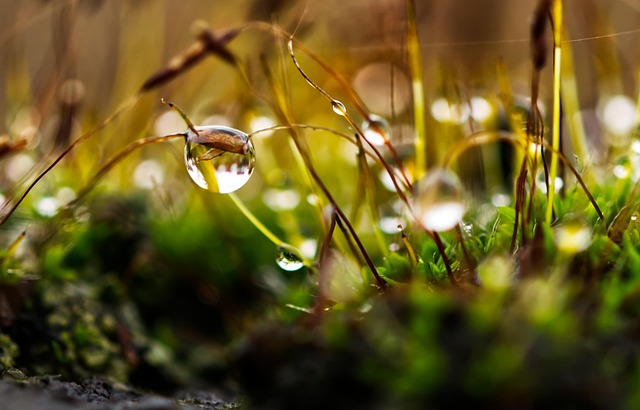Understanding your lawn's unique water needs is key to effective Lawn Care and Landscaping. This involves considering grass types, climate, soil, and topography. Based on these factors, select an appropriate irrigation system (sprinkler, drip, or micro-sprinkler) that suits your property. Installation includes planning layout, preparing the ground, and connecting pipes with emitters/sprinklers to a water source, followed by testing and programming a smart control system. Regular maintenance involves inspecting for damage, cleaning lines, adjusting timings based on seasons, and using smart controls for optimal lawn health and irrigation lifespan.
“Transform your lawn into a thriving oasis with efficient irrigation! This comprehensive guide covers all aspects of irrigation system installation, from understanding your lawn’s water needs to choosing the right system and step-by-step installation. Learn how to create a tailored plan for optimal hydration, ensuring lush greenery and long-term health. Discover tips for maintenance and troubleshooting, making your irrigation system a game-changer in Lawn Care and Landscaping.”
- Understanding Your Lawn's Water Needs and Choosing the Right Irrigation System
- Step-by-Step Guide to Installing an Efficient and Effective Irrigation System
- Maintaining Your Irrigation System for Optimal Lawn Health and Longevity
Understanding Your Lawn's Water Needs and Choosing the Right Irrigation System

Understanding your lawn’s water needs is a crucial first step in choosing the right irrigation system for effective lawn care and landscaping. Different grasses have varying requirements, and factors like climate, soil type, and topography influence how much water your yard requires. Hot, dry climates demand more frequent watering, while cooler regions may only need it a few times a week. Additionally, dense, high-maintenance lawns will necessitate a different approach than sparse, low-maintenance areas.
Once you comprehend these needs, selecting an appropriate irrigation system becomes simpler. There are various types available, such as sprinkler systems, drip irrigation, or micro-sprinklers, each offering unique advantages for lawn care and landscaping. Sprinklers provide broad coverage but may not be as efficient in damp areas, whereas drip systems deliver water directly to the roots, conserving more while ensuring your lawn gets the hydration it needs. Choosing the ideal system depends on balancing cost, efficiency, and your lawn’s specific requirements.
Step-by-Step Guide to Installing an Efficient and Effective Irrigation System

Installing an efficient and effective irrigation system is a great way to enhance your lawn care and landscaping efforts. Here’s a step-by-step guide to ensure a successful installation:
1. Assess Your Landscaping Needs: Start by evaluating your property’s unique features, such as the size of your lawn, plant types, and sunlight exposure. This will help you determine the best type of irrigation system—drip, sprinkler, or micro-sprinkler—for optimal water distribution and plant health.
2. Plan Your Irrigation Layout: Sketch out a layout of your yard, marking areas that require more or less water. Consider the placement of existing structures, trees, and shrubs to minimize water waste. Plan for zones with high evaporation rates or dense vegetation that may need additional attention. Ensure your design adheres to local watering restrictions and regulations for lawn care and landscaping.
3. Choose the Right Equipment: Select high-quality components suitable for your chosen irrigation system. This includes valves, pipes, emitters (for drip systems), or sprinklers. Consider energy-efficient options like smart controllers that allow you to program watering schedules remotely. Ensure all equipment is compatible and meets industry standards for safe and effective water distribution.
4. Prepare the Ground: Clear the area of any debris, weeds, or obstructions. Dig trenches or holes according to your irrigation layout plan. Ensure proper depth and spacing for pipes and emitters, following manufacturer guidelines. Backfill with soil, compacting it gently to ensure a secure fit.
5. Install Pipes and Emitters/Sprinklers: Lay the main supply line and branch lines as per your design. Connect them to your water source, ensuring proper pressure and flow rates. Install emitters or sprinklers at the designated locations, testing each one for proper alignment and spray pattern.
6. Set Up the Control System: Program the irrigation controller according to your climate, plant types, and watering schedule preferences. Test the system thoroughly, checking each zone for proper functionality and water distribution. Make adjustments as needed to ensure even moisture throughout your lawn and landscaping.
Maintaining Your Irrigation System for Optimal Lawn Health and Longevity

Regular maintenance is key to ensuring your irrigation system delivers consistent water to your lawn, promoting lush growth and robust health. Start by inspecting the system for any signs of damage, leaks, or clogs in the lines and emitters. Regular cleaning and flushing can prevent mineral buildup and ensure water distribution efficiency. Adjusting sprinkler heads and timings according to seasonal changes is also essential. During warmer months, adjust the schedule to account for faster evaporation rates, while cooler seasons require less frequent but deeper watering to encourage strong root growth.
Don’t forget to assess your lawn’s overall health and adapt your irrigation strategy accordingly. Lawns with specific needs, such as new installations or areas with different soil types, may require tailored watering patterns. Incorporating smart controls and sensors can automate these adjustments, providing optimal lawn care and landscaping outcomes. Regular maintenance not only extends the lifespan of your irrigation system but also guarantees a vibrant, thriving lawn for years to come.
Irrigation system installation is a strategic investment in your lawn care and landscaping efforts. By understanding your lawn’s water needs, selecting the appropriate system, and adhering to maintenance best practices, you can achieve lush, vibrant grass and significantly reduce water usage. Following these steps ensures optimal lawn health and longevity while promoting sustainable practices in your outdoor space.
